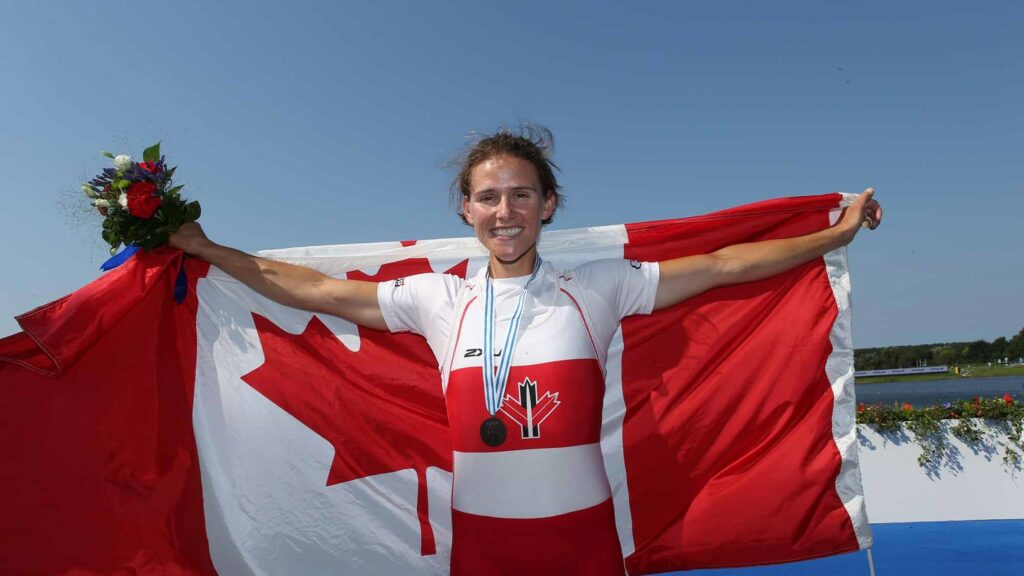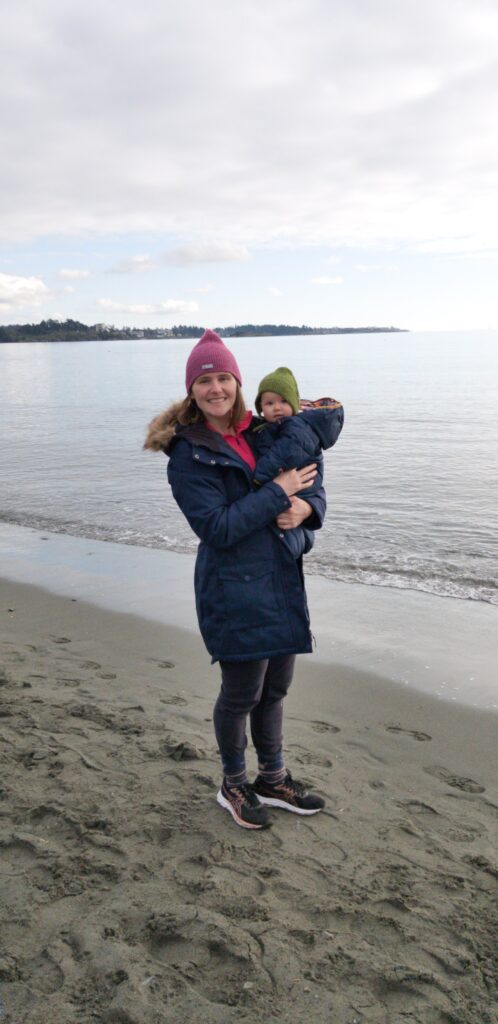
26 Nov 2021
Rowing during pregnancy and beyond
Kate Haber (nee Sauks) competed in the lightweight women’s single and double sculls for Canada between 2015 and 2018. In 2017, she gave birth to her first child, and managed to be back in shape for the 2018 World Rowing Championships, where she finished ninth in the lightweight double. But that quick recovery also put an end to Haber’s international rowing career after competing at the 2019 Pan-Am Games. With a PhD in rehabilitation science, and a certification in pre- and post-natal fitness, Haber is using her experience to help other women on their training and pregnancy journeys.
Haber is among a small, but growing, group of female athletes who have made a return to international competition following pregnancy and childbirth. In some countries, like Romania, this pathway is quite common – half of the women’s eight that won gold in Athens had children at the time. But in other countries, the trend is less forthcoming. In recent years, athletes like Helen Glover, Sanita Puspure and Sinnead Jennings have been added to the list. Haber helps us look at what is possible for the average pregnant athlete, how to approach recovery and what needs to shift in the world of elite rowing to support rowing parents.
The pregnant athlete
Until recently, there has been a lack of research on the topic of exercise during pregnancy. It led to recommendations such as keeping your heartrate under 140 bpm, or not strength training.
“That’s being shown to not be the case,” Haber says. “If someone has been rowing their whole life and done a lot of intensity, they can continue doing that while pregnant. The guideline is, instead of going to absolute max, maybe stop at about 8.5/10.”
Haber clarifies that there are some exceptions. One is if the person has an absolute contraindication for exercise, something to discuss with their doctor, or if the person has never done high intensity workouts before their pregnancy. But for athletes with a healthy pregnancy, Haber says you can still go quite hard.
She also recommends maintaining a strength training programme.
“I think that strength training during pregnancy is so important. Strength training helps so much with minimising aches and pains as your belly grows and you gain weight. It helps with making labour and delivery easier and it helps with speeding your recovery after having a child,” she says.
And finally, Haber says that rowing is a fantastic form of exercise while pregnant.
“It’s not weight-bearing, and it’s a great alternative to walking or running. It gives a full-body workout with both a strength and conditioning component,” she says.
Haber just warns against situations when you might fall into very cold water and being careful when the temperatures are very hot. She also says that some top athletes might become frustrated with their belly being ‘in the way’, and the technical adjustments necessary to accommodate a growing belly. At that point, rowers may choose to switch to another type of exercise.

The road to recovery
While Haber says ‘the sky is the limit’ during pregnancy, she takes a different tact in the post-partum phase. She recommends three phases.
The first phase is rest and recovery. Haber says this is crucial to help the body rebuild before it gets put under additional training stress.
She calls the core a ‘deflated balloon’, which needs time to heal properly. While Haber says she didn’t lose much strength during her pregnancy, it was the connection between her legs and upper body, through the core, which was lost. This is, of course, a key component in the rowing stroke.
The second post-partum phase is retraining, which means the inclusion of strength training exercises. Haber says here you can incorporate bands, weights and start to return to basic training.
The final phase Haber calls ‘bullet-proofing your body’. That is when women start to incorporate impact exercises and increase the intensity. But Haber is quick to point out the need to go through each of these phases and check the boxes in each one before progressing.
“This can really reduce complications that can arise up to a year later,” she says. “The thing is, in your mind you can do it – you remember how to do it, for example how to row and how to row hard. But first you need to check off the boxes, otherwise you can get complications.”

Pregnancy in elite sport
Haber would like to see more support for athletes who want to have children and return to the sport.
“It would increase the longevity of athletes careers. Longevity is so important in sport. You can transfer your knowledge to the next generation and help them progress,” she says. “And there is enough evidence now that women come back just as strong, or stronger after pregnancy. But for it to work, both women and men need to feel like they have support.”
Haber also recognizes that there are specific logistical challenges in the sport of rowing. It is a team sport, which often requires athletes to train at the same time, in the same place. Haber says there are more examples from other sports, like Athletics, of women successfully returning to the sport after having children.
“It takes a lot of energy,” she says. “And there’s not always a lot of accommodation for an individualised programme. I hope that there will be more support for it in the future.”
In the meantime, Haber says if you want to make it happen, be sure to communicate well with your coach and get their support. And always to consult with a physical therapist specialized in internal pelvic floor health.
For more information about Kate Haber and her work, please visit her website here: https://www.islandmom.ca/about

